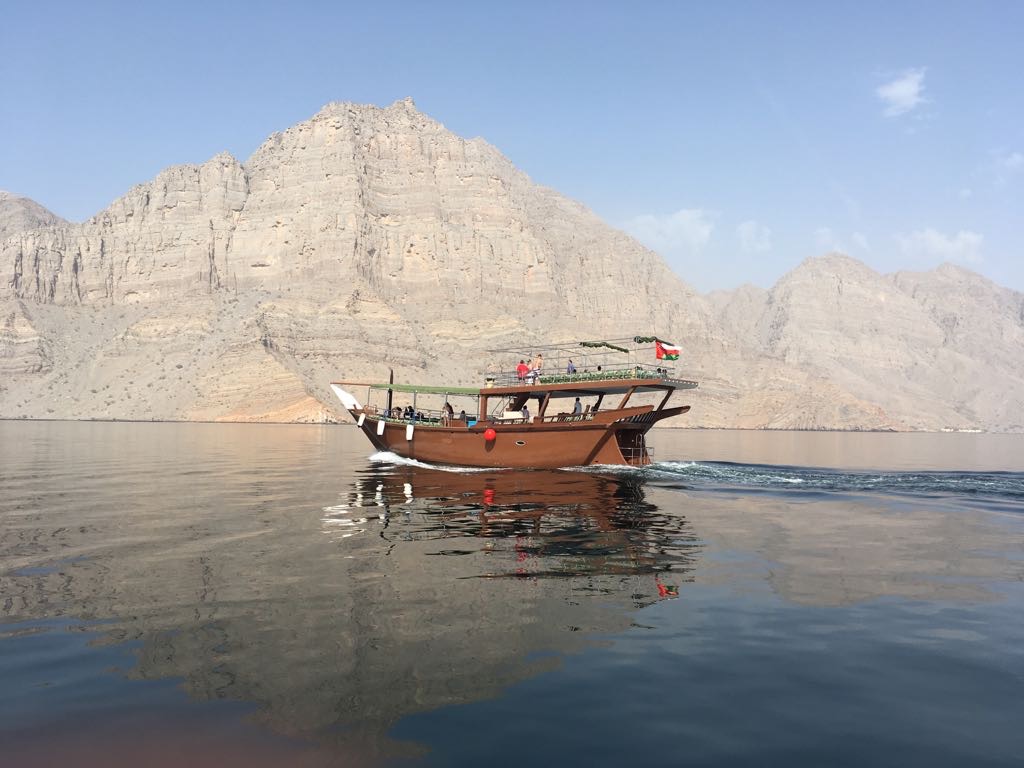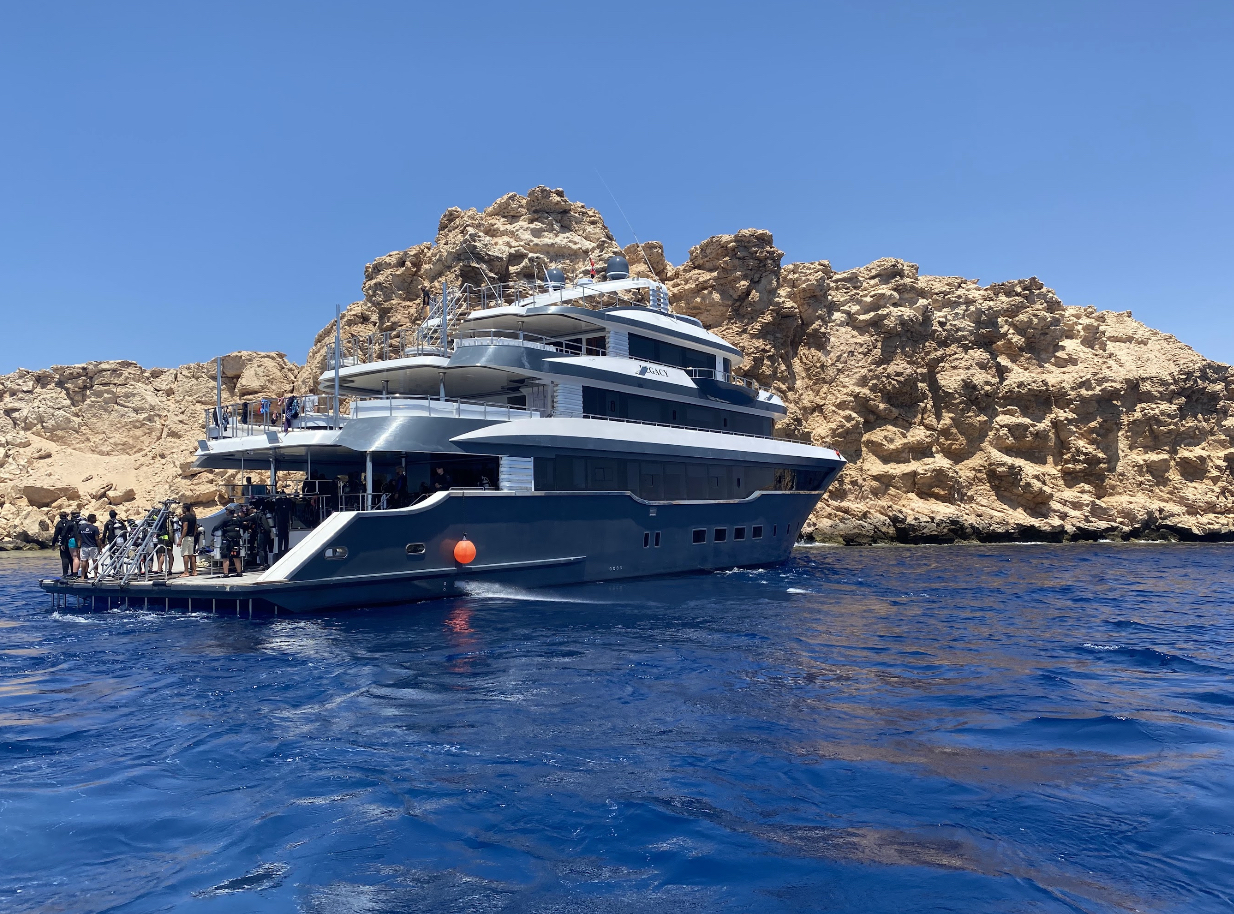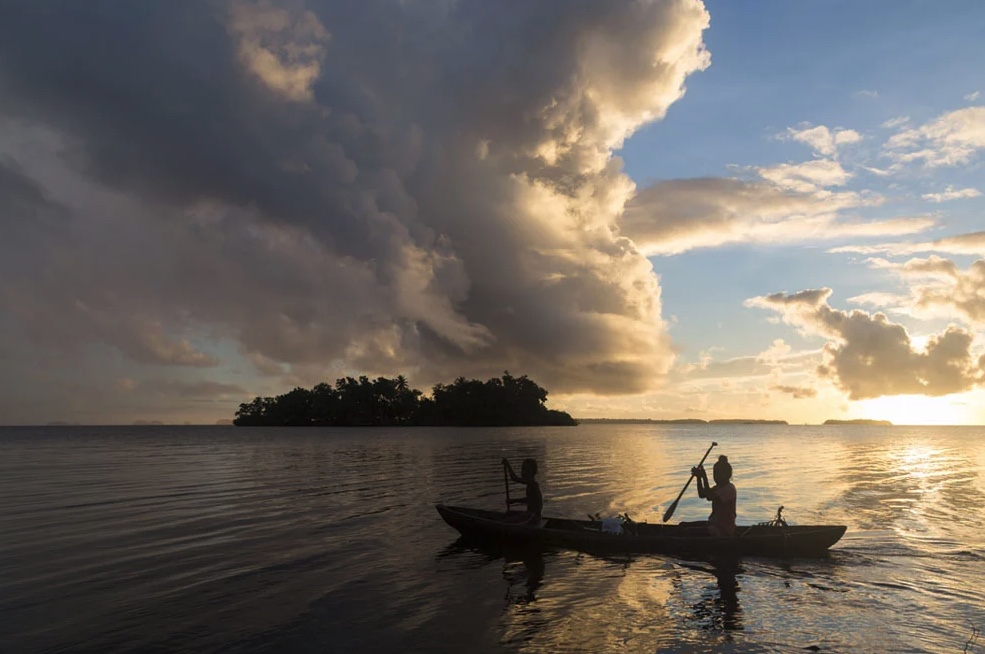News
Scuba dive the world with Sea to Sky: a guide on optimal seasons

The team from dive tour operator Sea to Sky offer advise on the optimal seasons to go scuba diving in some of the world’s best diving hotspots
Raja Ampat: Dive seasons dive amazing
Raja Ampat’s diving experience is shaped by two distinct seasons. The northwest monsoon, spanning October to April, stands out as the prime time for exploration. Conversely, from June to September, the southeast monsoon introduces winds and challenging seas, particularly impacting Misool and Triton Bay in the south. Dive resorts in these regions temporarily close due to unfavourable conditions. However, the northern and central areas, sheltered from the winds, remain open throughout the year.
As the tropics dictate, anticipate sporadic rainfall during any visit. The wettest periods typically occur in November, December, and July through August, characterized by brief, intense showers that swiftly clear.
Water Temperatures
Expect warm waters, steady at 27-29°C.
Oman: Dive comfortable
Nestled between the warm waters of the Indian Ocean and the Gulf of Oman, Musandam unveils a stunningly dramatic landscape accompanied by one of the world’s richest marine biodiversity’s. The Musandam Peninsula reveals 23 exquisite and distinctive dive sites, each adorned with thriving coral reefs boasting extraordinary biodiversity. These sites offer a diverse array of wall and drift dives, complemented by two intriguing wrecks.
The underwater landscapes feature sloping bottoms with depths ranging from 3m to 35m. While some secluded beach entry dives are possible, most exploration occurs via speedboat or traditional dhow, ensuring a captivating and immersive diving experience in Oman, scorching summers (June to August) can make surface conditions uncomfortable.
Water Temperatures
Optimal diving windows occur during April-May and September-November in the Musandam Peninsula. Water temperatures vary from a summer high of 32°C to a winter low of 23°C.
The Red Sea: Year round marvels
The Red Sea beckons divers throughout the year, offering a diverse experience depending on the season. From June to August, above-water temperatures soar to 35°C and beyond, creating a warm and vibrant atmosphere. In contrast, the period between December and February witnesses a dip in water temperatures to a frigid 22°C, necessitating a thick wetsuit, hood, and gloves for comfort.
To maximize your diving adventure, consider planning your trip between March and May or September and November. During these months, you’ll enjoy a harmonious blend of optimal diving conditions, fewer crowds, and the chance for awe-inspiring wildlife encounters. Be mindful of avoiding peak times like school and religious holidays for a more serene experience at the region’s accessible sites.
Water Temperatures
Warm waters prevail from April to November, hovering around 27-29°C, while winter sees averages of 23-25°C.
Thailand: Dive all year, choose your season
While November to April offers optimal site conditions, Thailand’s scuba diving season extends year-round. Liveaboards to the Similan Islands typically operate from late October to mid-May. To witness whale sharks, plan your dive between February and May, when plankton concentration peaks. This period also enhances manta ray sightings, though numbers vary annually. The west coast’s late high season (February to May) boasts the warmest water temperatures, exceeding 30°C, while June to October brings cooler waters.
Visibility can surpass 30m in peak season, but plankton blooms may affect it, attracting larger marine creatures. May to October marks the off-season on the west coast, with reduced visibility, variable surface conditions, and increased rain. Fewer liveaboard trips operate, and remote dive sites like Hin Daeng and Richelieu Rock may be inaccessible. However, the Gulf of Thailand experiences its own high season, offering a compelling alternative.
Water Temperatures
Water temperatures remain consistent, ranging from 26°C to 31°C.
Myanmar: Tropical dive heaven
Myanmar boasts a tropical climate, making it a haven for liveaboard diving from October to May. The pinnacle of ideal conditions unfolds in the Mergui Archipelago, especially from December to April. During this period, the seas reach their calmest state, and visibility peaks, creating an optimal environment for divers.
This window showcases Myanmar’s underwater wonders at their best, inviting enthusiasts to explore the mesmerizing depths of the Mergui Archipelago amid tranquil seas and crystal-clear waters.
Water Temperatures
Sea temperatures range from 26°C in October to 30°C in February.
Palau: Dive excellence year round
Palau’s scuba diving delights enthusiasts year-round, promising excellent conditions whenever you choose to visit. The average air temperature remains a comfortable 28°C consistently, with daytime temperatures reaching 29-30°C and night-time temperatures at 24-25°C.
For those with the luxury of choice, the prime period to experience Palau’s underwater wonders is from December to March. During these months, diving conditions are optimal, featuring calm, warm waters and minimal rainfall. In transitional months—April, July, August, October, and November—expect increased rainfall. The low season, spanning May, June, and September, sees more rain and wind, resulting in fewer visitors. Despite these conditions, diving remains superb, with most dive sites accessible throughout this period.
Water Temperatures
A pleasant 28°C year-round for comfortable diving.
Bahamas: seasonal pelagic spectacles
The Bahamas boast diverse pelagic fish concentrations dictated by the seasons. From November to April, Bimini witnesses frequent appearances of great hammerheads and bull sharks, providing an exhilarating experience for divers. Tiger Beach, renowned for year-round diving, makes it challenging to pinpoint a specific peak season.
However, many divers favour September through March, drawn by generally favourable weather conditions during these months. March and April offer thrilling encounters with oceanic whitetip sharks at Cat Island. For reef diving throughout the Bahamas, any time of the year is viable, with a cautionary note about the risk of hurricane weather during the summer months.
Water Temperatures
Summer warmth at 31°C, dipping to 24-27°C in winter.
Maldives: Dive paradise in seasonal bliss
Diving in the Maldives remains open year-round, but for optimal liveaboard experiences, November to May is recommended. During this period, the northeast monsoon prevails, bringing cloudless skies and glass-like ocean surfaces. Underwater visibility ranges from 20-30m on the east side of the atolls and 15-20m on the west side, with the eastern atolls generally offering better visibility.
From June to November, the southwest monsoon transforms the underwater landscape, with ocean currents changing direction. Manta rays and sharks become more prevalent during this season. While the skies may be cloudier, winds stronger, and the sea more restless, good sunny days persist. Surface bulges, particularly during the rainy season in June/July, may reach 1-2m, accompanied by 3-4 hours of heavy daily rains and monsoon crossings in late May and early December.
Water Temperatures
A consistent 26-29°C, dropping to 24°C during the northeast monsoon in the far south.
Galapagos: Wet and Dry
Diving in Galapagos is fantastic all year round but there are two distinct seasons.
The warm season is December to May with water temperatures around 23-25°C. The conditions are calmer and currents are less at this time of year. It is a great time to see huge numbers hammerheads, silkys and Galapagos sharks.
The cooler season is June to November with water temperatures dropping to 16-18°C. Rougher sea conditions and strong currents make the diving more challenging. The cool season is all about whale sharks which are around the islands of Darwin and Wolf at this time. There are still large schools of hammerheads and occasional Silkys and Galapagos shark around the islands.
Visibility is generally between 10 and 21 meters (30 to 70 feet) and conditions can be challenging because of the surges and currents common in the area.
Water Temperatures
See above.
Philippines: Dive paradise
The Philippines, with its intricate weather patterns, offers year-round diving, but certain areas should be approached with caution during the wet season. The optimal time for diving across the country is generally from December to April, the dry season. Conversely, the traditional wet season spans June to October, with Palawan experiencing the heaviest rainfall.
In the central Visayas, conditions remain delightful during this period, featuring calm waters and good visibility. The shoulder months of November and May also present excellent diving opportunities, contingent on the specific location.
Here’s a guide based on destinations:
- Anilao: September to May
- Bohol: All year
- Moalboal: All year
- Dumaguete: All year
- Palawan: September to May
- Puerto Galera: All year
- Malapascua: All year
- Tubbataha: March to June
Water Temperatures
Warm waters at 27-31°C, peaking in April, May, and June.
Solomon Islands: A dive wonderland year-round
Diving enthusiasts can explore the wonders of the Solomon Islands year-round, although a monsoon season from January to April introduces a higher likelihood of rain and windy days, adding a unique beauty to the experience. June through August sees slightly cooler temperatures, maintaining a warm and humid atmosphere. Accessible through both liveaboard and dive resorts, combining both options ensures the greatest potential for extraordinary dives. Regardless of when you choose to dive in the Solomon Islands, an unforgettable and awe-inspiring experience is guaranteed, offering a journey into the remarkable underwater world of this tropical paradise.
Water Temperatures
Comfortable diving temperatures, ranging from 27 to 31°C.
Truk: Dive excellence anytime
Truk, a captivating dive destination, welcomes enthusiasts year-round, showcasing its underwater marvels. The dry season from December to April is considered the prime time, although diving is feasible throughout the year. Truk Lagoon offers excellent diving conditions, characterized by relatively easy exploration. The water temperatures remain warm, ranging from 28-30°C with minimal variation. For most divers, a 3mm suit suffices, ensuring comfort. Wreck divers are strongly advised to use a full-length exposure suit to prevent injuries from wreckage. Technical and wreck divers should come prepared with suitable exposure protection for prolonged deco-stops, ensuring a safe and enjoyable diving experience in Truk’s diverse underwater landscapes.
Water Temperatures
Warm water is to be expected year round with very little variation from the norm of 28-30°C.
Join Sea to Sky and embark on new diving adventures! Visit www.myseatosky.co.uk for more information.
Gear News
Go anywhere with Stahlsac
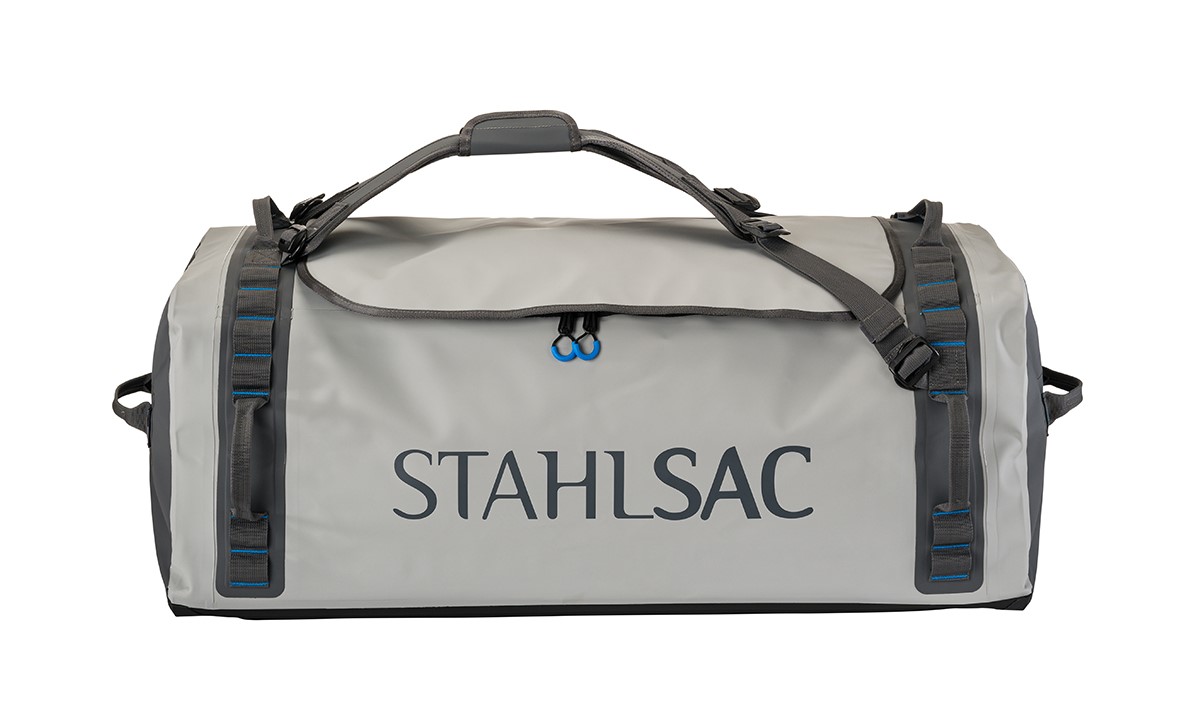
Stahlsac dive bags and travel luggage are built for our community of divers, surfers, kayakers and outdoor explorers who need bags that are constructed with durability, toughness, and 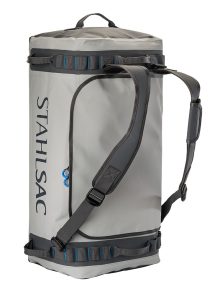 the highest quality the industry has ever seen. We were founded by one man determined to build better watersports and dive bags, and today, that mission is carried on by many. Adventure doesn’t just present itself; it requires discovery. When we design dive bags, we make sure they are tough enough for you to explore in all conditions—warm and cold, wet and dry—to the nearest and farthest reaches of the earth. And for those times you want to push the boundaries of adventure, Stahlsac dive bags make sure you can truly GO ANYWHERE.
the highest quality the industry has ever seen. We were founded by one man determined to build better watersports and dive bags, and today, that mission is carried on by many. Adventure doesn’t just present itself; it requires discovery. When we design dive bags, we make sure they are tough enough for you to explore in all conditions—warm and cold, wet and dry—to the nearest and farthest reaches of the earth. And for those times you want to push the boundaries of adventure, Stahlsac dive bags make sure you can truly GO ANYWHERE.
Abyss Duffels
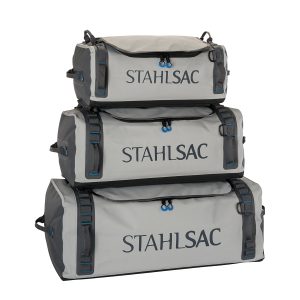 Made to be your partner-in-crime on every adventure, Stahlsac’s Abyss Duffels protects your gear from Mother Nature’s worst. Tough and 100% waterproof with double-TPU nylon material that shrugs off daily wear-and-tear, and RF-welded seams further boost the bag’s potential for lifelong exploring. Get Wet. Get Lost. Go Anywhere with Abyss.
Made to be your partner-in-crime on every adventure, Stahlsac’s Abyss Duffels protects your gear from Mother Nature’s worst. Tough and 100% waterproof with double-TPU nylon material that shrugs off daily wear-and-tear, and RF-welded seams further boost the bag’s potential for lifelong exploring. Get Wet. Get Lost. Go Anywhere with Abyss.
- A weatherproof duffel for trips, travel, and adventure
- Ultra-durable double-TPU nylon protects your gear
- Material repels water and keeps your equipment dry
- RF-welded seams are flush, tough, and waterproof
- Removable straps transform duffel into backpack
- Zippered internal stow compartments carry essentials
- External zippered flap is easy to open and close
- Welded external handles make transporting a breeze

Panama Mesh Backpack
 The most copied design in scuba diving, the Stahlsac Panama Mesh Backpack is the “original” design and features two high-density foam padded shoulder straps, extra durable polyester mesh, duffel bag handles and our unique zippered dry pocket inside that combines with a wet pocket outside. The bottom’s built from reinforced 18-gauge PVC nylon to combat the wear and tear of your active coastal lifestyle, and, as a bonus in every bag, we supply a 12″ x 12″ mesh drawstring satchel for extra stowing utility. Pack up your beach kit and go.
The most copied design in scuba diving, the Stahlsac Panama Mesh Backpack is the “original” design and features two high-density foam padded shoulder straps, extra durable polyester mesh, duffel bag handles and our unique zippered dry pocket inside that combines with a wet pocket outside. The bottom’s built from reinforced 18-gauge PVC nylon to combat the wear and tear of your active coastal lifestyle, and, as a bonus in every bag, we supply a 12″ x 12″ mesh drawstring satchel for extra stowing utility. Pack up your beach kit and go.
- Density foam padded shoulder straps
- Outside wet/dry pockets
- 2 Carry handles
- Tough, snag-resistant polyester mesh
- Reinforced PVC bottom

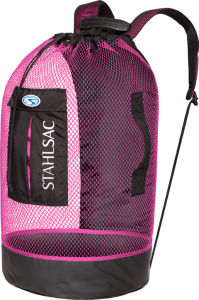

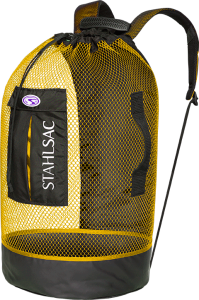
For more information about Stahlsac bags, visit www.stahlsac.com/dive-bags.
Sea & Sea is the home of Stahlsac and other leading diving brands in the UK.
Blogs
EXCLUSIVE: Jeff Goodman interviews Mark Spiers, CEO of New Scuba Diving Training Agency NovoScuba
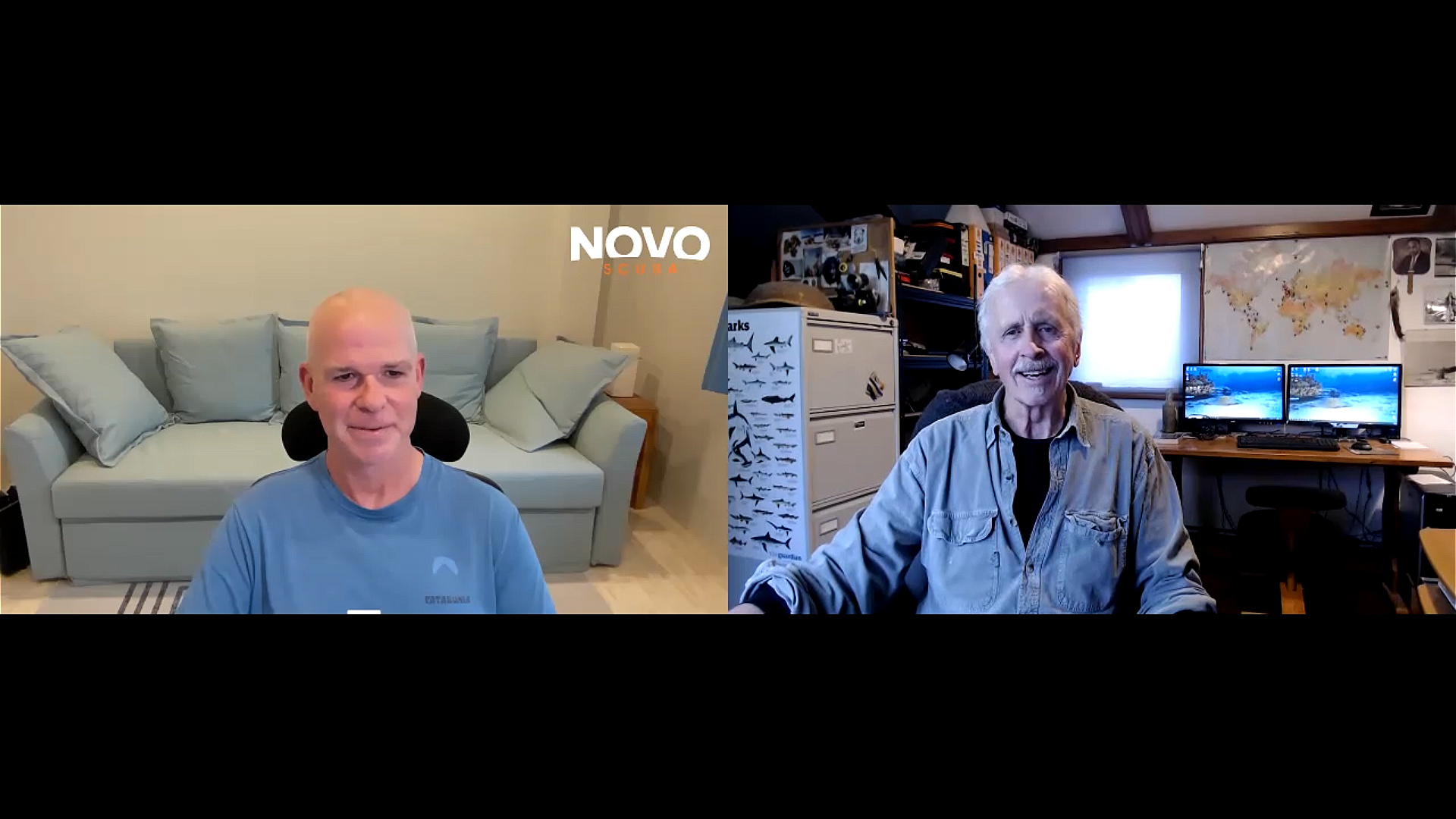
In a video recorded exclusively for Scubaverse.com, Jeff Goodman interviews Mark Spiers, CEO of new scuba diving training agency NovoScuba.
Find out more about NovoScuba at www.novoscuba.com.
-

 News3 months ago
News3 months agoCapturing Critters in Lembeh Underwater Photography Workshop 2024: Event Roundup
-

 Marine Life & Conservation Blogs3 months ago
Marine Life & Conservation Blogs3 months agoCreature Feature: Swell Sharks
-

 Blogs2 months ago
Blogs2 months agoMurex Resorts: Passport to Paradise!
-

 Blogs2 months ago
Blogs2 months agoDiver Discovering Whale Skeletons Beneath Ice Judged World’s Best Underwater Photograph
-

 Gear Reviews3 weeks ago
Gear Reviews3 weeks agoGEAR REVIEW – Revolutionising Diving Comfort: The Sharkskin T2 Chillproof Suit
-

 Gear Reviews3 months ago
Gear Reviews3 months agoGear Review: Oceanic+ Dive Housing for iPhone
-
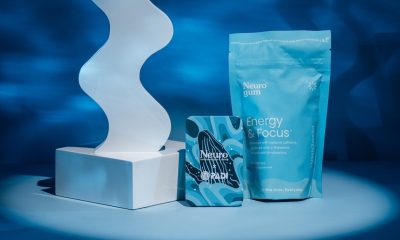
 News2 months ago
News2 months agoPADI Teams Up with Wellness Brand Neuro to Drive Ocean Change and Create a Blue State of Mind
-

 Marine Life & Conservation2 months ago
Marine Life & Conservation2 months agoSave the Manatee Club launches brand new webcams at Silver Springs State Park, Florida



